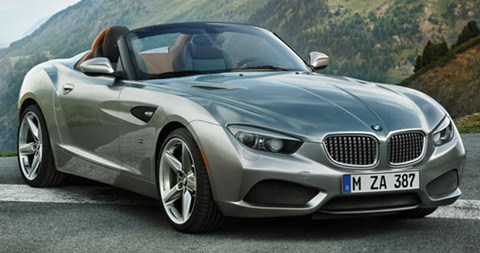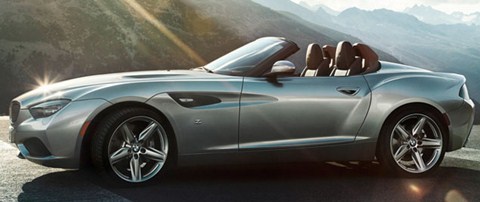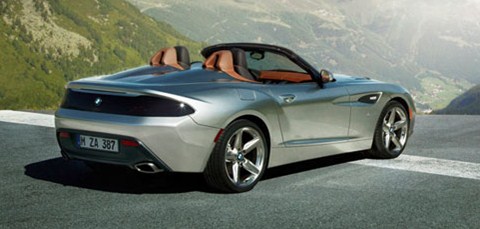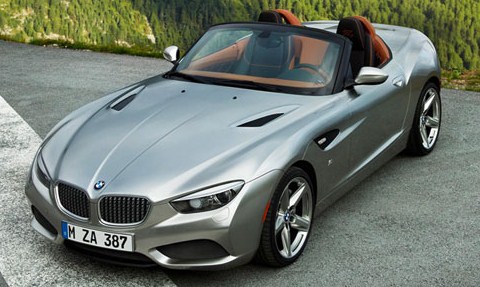Mahindra SsangYong Rexton
Mahindra & Mahindra’s acquisition of the Korean Ssangyong brand paved the way for the Indian car manufacturer to further strengthen its position in the SUV segment. And while last year’s launch of the well-received XUV500 marked Mahindra’s first premium SUV offering, M&M has now introduced the Ssangyong Rexton premium SUV to take things up a notch. The Rexton, in a nutshell, is a big, body-on-frame SUV that will compete with the likes of the Toyota Fortuner, Mitsubishi Pajero Sport and Ford Endeavour.
For an SUV that is both longer and wider than the already large Toyota Fortuner, the Rexton lacks the road presence that even the marginally smaller Pajero Sport has in spades. That’s down to the facelifted Rexton’s sloping bonnet, gently peeled-back headlamps and curvy grille, which lend the front a certain softness.Despite that, however, the car manages to look a whole lot better than the model it replaces and the overall styling, especially at the front, is quite contemporary. That chrome-rich grille gives the front plenty of flash, the headlamps with their projector pods are smartly detailed, and those heavily flared wheel arches give the design much needed muscle. Further back, the wraparound rear windscreen looks quite neat and injects much flair to the tail section.
Open the Rexton’s doors and you will find that the cabin looks plush, everything appears solidly put together, and the leather seats with their soft cushioning and smart stitching are really inviting too. Panel fit is excellent and the soft-touch plastics on the dashboard-top feel like they’re from an expensive German saloon.
The Rexton also comes loaded with features like a touchscreen interface for the audio system, DVD player, Bluetooth telephony, satellite navigation, sunroof, climate control, rear parking sensors, automatic headlamps, rain-sensing wipers, cruise control and steering-mounted audio controls.
However, it’s when we move to the back that the Rexton’s cabin loses some points. For starters, the slightly low-set seats and high floor compromise the seating posture to some extent, though it’s still better than an Endeavour. The cabin also isn’t as roomy as the large exteriors lead you to believe.
As for the last row of seats, the less said the better. You sit virtually on the floor with your knees pointing towards your chin, and with no headrests for these seats, your neck is left unsupported too. If there’s some consolation, it’s that the rearmost section gets a pair of air-con vents with their own blower speed control.
The Rexton comes with a 2.7-litre, in-line five-cylinder DOHC turbo-diesel motor, with the option of five-speed manual and five-speed auto transmissions. Curiously, the engine is tuned differently for the two gearboxes, so as a manual it produces 162bhp and 34.7kgm of power and torque, respectively, while in the automatic it produces a far more substantial 184bhp and 41kgm. The automatic variant also comes with permanent all-wheel drive, and this allows the Rexton to get off to a clean start and post a quick 0-100kph time of 10.92 seconds.
However, the engine makes quite a racket, one that gets progressively louder as the revs rise. The nine-blade radiator fan is responsible for most of this. Then there’s the slow-witted automatic gearbox that takes much away from the driving experience. You can change gears manually via buttons on the steering wheel, or alternatively, a switch on the gear lever.
While the Rexton Auto’s 11.18kpl ARAI-tested figure makes it quite the diesel-guzzler, its power delivery is nice and linear, and for relaxed driving in the city or on the highway, the engine should cope well enough.
2014 Chevrolet Corvette Stingray
After months of speculation, spy shots and “leaked” 3-D images raising the anticipation level and the excitement of the fanboy in us, here it is folks, The 2014 Chevrolet Corvette Stingray, and yes, the iconic Stingray name is back since it was last seen in the ‘Vette C3.
As promised, Chevrolet has taken off the wraps of what’s arguably one of the most highly anticipated cars in 2013 at the Detroit Motor Show. This is the day we at TopSpeed have been waiting for since all of this C7 talk started about a year ago.
Rather than calling it the “Corvette,” Chevy boldly calls it the “New Corvette.”Calling it “New” is absolutely correct, as everything on the car is brand new. From a new design to a new powertrain to a brand new interior, Chevrolet has revolutionized every nook and cranny of the `Vette. But it still has that modern Corvette philosophy that has been retained for the past six generations, maybe even made it better.
Updated 02/12/2013: Chevrolet has unveiled a new video in which it explains the lightweight materials used in the new Corvette Stingray that make it 99 pounds lighter than the C6 Corvette.
Updated 02/14/2013: Chevrolet has unveiled yet another video featuring the new Corvette Stingray. This time the company talks about the car’s engineering: the aluminum space frame, the advanced lightweight materials and the innovative joining processes.
Click past the jump to enjoy our full review and check out whether we were impressed by the all new ‘Vette or if Chevy could’ve done better.
Exterior
This aspect definitely deserves a separate section of its own. Unlike the design of the Corvette C6 which was merely a C5 with a facelift, the C7’s was designed from scratch.
Design does have some inspiration from the Stingray Concept
It does have some inspiration from the Stingray Concept, both in design as well as the name it carries.
The front end embraces an all new design that looks even more visceral than ever before. At a certain angle, the car sports an evil smile that does suit its nature. The headlights are new with the industry-standard LED daytime lights. The front does look really good, but we can’t help but notice the eerily striking resemblance to the SRT Viper. But it’s not all that controversial unlike the rear end.
Very aggressive styling that competitors can drool at
Speaking of the rear end, it’s all vents and tailpipes. The rear end has received a very aggressive styling that competitors can drool at when the Stingray blazes past them. The quadruple taillights stay true to the Corvette tradition, but the trapezoidal design has a slight inspiration from the Camaro. Like the recent `Vettes, the Stingray sports large trumpet-like quad tailpipes bolted nicely in the center of the rear valence.
The resemblance to other competitors doesn’t stop with the front-end. Coming to the side profile, it clearly has elements of the Nissan GT-R and Ferrari all mashed up into one, but it doesn’t wander away from the actual shark-like design of the original Stingray. It’s again all aggressive with creases and slashes here and there, like a Dolph Lundgreen character after being beaten up by villains. Then again, when a hero is beaten up, it’s only then he gains the power to kill the villain — a movie cliché.
With vents all over, including a massive one up front, and the aerodynamic design, the new ’Vette has a low drag coefficient and stays planted to the ground. Thanks to the carefully sculpted creases and fenders, it also dispels air without a sweat.
To sum it up, the design is absolutely visceral, jaw-dropping and arguably the best Corvette ever made. Though it has certain elements of its competition, it’s still instantly recognizable as a Corvette (or rather the “new” Corvette).
Exterior Specifications:
| Measurement | Specification |
|---|---|
| Wheelbase | 106.7 in. |
| Overall length | 177 in. |
| Overall width | 73.9 in. |
| Overall height | 48.6 in. |
| Weight distribution (% front / rear) | 50 / 50 |
Interior
Chevrolet has a track record of making one of the worst interiors for the Corvette over the years. Do they maintain that track record with the new Corvette C7? In a nutshell , absolutely Absolutely not!
It’s a significant departure from the bland, second-class third-class interior that people got even after paying a fortune for an iconic supercar. What a relief...
Cheap plastic that used to dominate the C6’s C6 interior is now replaced with a soft-touch material and leather everywhere. Unlike the bland seats of the C6, the Stingray C7 sports two types: - base version and a body-hugging more body hugging Sport Competition seat.
The aggressive design doesn’t stop with the exterior. The interior now looks peaceful, cozy, yet has a subtle aggressiveness to it that the driver would look forward to planting his bottom in every day. The Stingray’s interior more driver focused now, as all of the controls and the navigation system are angled towards him.
Peaceful and cozy yet has a subtle aggressiveness that the driver will look forward to planting his bottom
The interior is by far the best interior that has been made for the Corvette and, frankly speaking, the best interior we’ve ever seen in an American car. It does bring build quality and suppleness to the table, an aspect that Europeans have been flaunting for years.

Performance and Ride
The one aspect that has added weight to the word "iconic" is its performance. The beast under the hood is an all new direct-injection 6.2-liter small-block V-8 engine dubbed the LT1. It produces 450 horsepower and 450 pound-feet of torque, making it the most powerful standard Corvette ever launched.
Engine Specifications:
| Displacement | 6.2-liters |
| Bore & stroke | 4.06 in. x 3.62 in. |
| Block material | Cast aluminum |
| Cylinder head material | Cast aluminum |
| Valvetrain | Overhead valve, two valves per cylinder |
| Fuel delivery | Direct injection |
| Compression ratio | 11.5:1 |
| Horsepower | 450 (est.) |
| Torque (lb-ft) | 450 (est.) |
To cope with stringent carbon emissions and fuel efficiency regulations , the Corvette Stingray sports an Active Fuel Management system that will shut down four cylinders, leaving the`Vette with a 3.1-liter 4-pot engine, for unmatched fuel efficiency when V-8 power isn’t needed . The engine will also feature direct injection and variable valve timing to help it use less fuel. In fact, GM anticipates greater than a 26 mpg highway city rating for the 2014 Corvette, which is quite spectacular when compared to its petrol-chugging rivals.
While the engine has a dual personality, where one sips fuel and the other fires all eight cylinders like a madman, which — thanks to the weight savings of the new aluminum chassis, and a carbon-fiber hood and roof — warps the ’Vette Stingray from 0 to 60 mph in under four seconds and to an anticipated top speed of 180 to 190 mph. Even in the base trim, the Stingray packs a punch, so imagine the personality of its twin brother, the Corvette Stingray Z51.
Transferring all that raw power is a brand new seven-speed manual gearbox with Active Rev Matching, which anticipates gear selections and matches engine speed for perfect shifts every time. Even with the seventh gear , the transmission isn’t a very significant upgrade, considering the fact that the gear ratios are still the same as the C6 — the 7th cog kept just for better fuel economy. Additionally, you can opt for a six-speed, paddle-shifted automatic transmission.
With the new Stingray, Chevy engineers have abandoned that road and instead are following in the footsteps of the car that has always been the epitome of handling — the Porsche 911. Like most latest-gen supercars, the Corvette features electric power steering for better cornering and less drain on the engine. The rack and pinion set-up is now beefed up for a stiffer response than the outgoing C6.
The suspension is revised with five different settings that you can choose from, depending on the response you’re looking for. At the top setting, the suspension becomes stiffer, steering ratios are revised and traction control is turned off, making it a track-ready car at the touch of a button. At the lowest setting, it becomes a restrained and comfortable car that makes highway cruising something to look forward to. Talk about convenience..
Suspension Specifications
| Front | Short/long arm ( SLA) double wishbone, cast aluminum upper and lower control arms, transverse-mounted composite spring, monotube shock absorber |
| Rear | Short/long arm ( SLA) double wishbone, cast aluminum upper and lower control arms, transverse-mounted composite spring, monotube shock absorber |
| Active handling | Magnetic Selective Ride Control (avail. with Z51) |
| Traction control | StabiliTrak, electronic stability control |
Courtesy of Brembo, the brakes are upsized to 12.6-inch front rotors and 13.3-inch rotors on the rear with a set of four-piston calipers squeezing them, resulting in greater stopping power. It is expected to take about 11 fewer feet to decelerate the Stingray form 60 to 0 mph than the current-gen Corvette. With that much stopping power, do be very of your eyes popping out...
Braking Specifications:
| Type | Brembo four-piston fixed front and rear calipers |
| Rotor diameter | Front 12.6 in. / Rear 13.3 in. |
Overall, the C7 underneath is brimming with race-spec technology that promises to be a departure from the hard-to-handle ’Vette’s of the past, something that is bound to terribly shame its counterparts. Even with all that technology, the Corvette C7 is still powered by the spirit of the legendary 1963 Chevrolet Corvette GrandSport. A true Corvette, by far...
Price
For those who have skipped the above topics just to know the size of the price tag it will sport, Unfortunately, Chevy hasn’t released any details about it. But we’ll give you this. It’s expected to cost around the $55,000 to $ 60,000, which is in accordance with the price of previous standard Corvettes. For that small amount, you’re getting more than what we think it should worth be. So people that are already hell-bent on buying one, start saving as the beast will arrive at your nearest showroom at Q3 this year
2013 Hennessey Venom GT Spyder
The sleek and sexy Hennessey Venom GT became a successful model in a very short time and Hennessey is hoping to repeat that success with an open top version of the same sports car. The new Hennessey Venom GT Spyder will be offered with a removable top and will only be produced in a limited run of five units, two of which have already been spoken for. Deliveries will begin in Summer 2012 and prices will start from $1.1 million, about $150,000 more than the Coupe’s top version.
The Venom GT Spyder will be powered by the same Chevrolet sourced V8 engine found in the Coupe with an output of 1,200 HP at 6,500 rpm and 1,155 lb-ft of torque at 4,200 rpm. Because of the added weight from the removable roof, performance numbers should be a tad bit slower than the Coupe, which sprints from 0-60 mph in 2.5 seconds and to 200 mph in 15.9 seconds, on its way up to a top speed of 275 mph. The engine will more than likely send its power to the rear wheels via a Ricardo 6-speed gearbox and handling will be facilitated by a KW variant three-adjustable coilover suspension.
As far as its design goes, the Venom GT Spyder will start off with the Lotus Elise base and will follow along the same extreme design lines as its Coupe sibling. We imagine it will also feature the same active aero system with adjustable rear wing that will deploy under varying conditions on both the road and racetrack.
"With the hardtop in place, the Venom GT offers a very visceral, raw, driving experience," said Hennessey CEO, Don Goldman. "With the hardtop removed, the wind and the growl of the twin turbo V8 will offer our clients an even greater driving sensation."
The 1,200 HP will make the Venom GT Spyder the most powerful convertible in the world. Will it also be the fastest? We believe it will, but Hennessey will have to keep that 275 mph top speed intact.
BMW Zagato Roadster
BMW and Italian coachbuilder Zagato uses the traditional coachbuilder's art, and BMW technology to create the 2012 BMW Zagato Roadster.
Six weeks after introducing the Zagato Coupe, the collaboration for this convertible concept took shape.
Two successful companies combining their resources, the BMW Zagato Roadster is an elegant convertible, with masculine and sporty details, capable of driving at high speeds with ease. Although details are sketchy at this point, the roadster is based on BMW's Z4.

Specifications
| Vehicle Type: Convertible | Base Price: NA |
| Fuel Tank Capacity: 14.5 gallons (55l) | Miles Per Gallon: 17 city / 24 hwy |
| Length: 167 in. (424.2 cm) | Wheel Base: 98.3 in. (249.6 cm) |
| Height: 50.8 in. (129 cm) | Width: 70.5 in. (179 cm) |
| Curb Weight: 3494 lbs (1584 kg) | Ground Clearance: NA |
| Luggage Capacity: 8.0 cu ft | Maximum Seating: 2 people |
| Engine: TwinTurbo Inline-6 DOHC* | Displacement: 3.0 Liter |
| Horsepower: 335 HP | Max RPM: 5900 RPM |
| Torque: 332 lb-ft @ 1500 rpm | Transmission: 6-Speed Manual |
| 0-60 mph: 4.8 seconds | Maximum Speed: 155 mph (1609 km/h) |
*Engine specs same as BMW Z4 35is

Engine
Exterior
The body is aerodynamically built, with a pair of intakes carved into the hood, supplying air to the engine compartment. The 19-inch, 5-spoke wheels, and the darker gray to light silver color, add that look of sophistication, and sportiness. Zagato roll-bars, an important design element, are inspired by aircraft wing components, and Zagato's signature roof, with the double bubble, extends the lines of the hood, from front to rear.

Interior
Transitional colors are used in horizontal, sweeping lines inside the doors, and the full-length console. The warm, brown shades of leather are wrapped around the black interior, with contrast stitching on the doors, seats, steering wheel, and console.
A signature Z is elegantly stitched into the comfortable leather seats, as a reminder of their origin. Specific features have not yet been released, but the 2012 BMW Zagato Roadster is a great-looking car that combines the superb styling of Zagato and BMW.


















0 comments:
Post a Comment